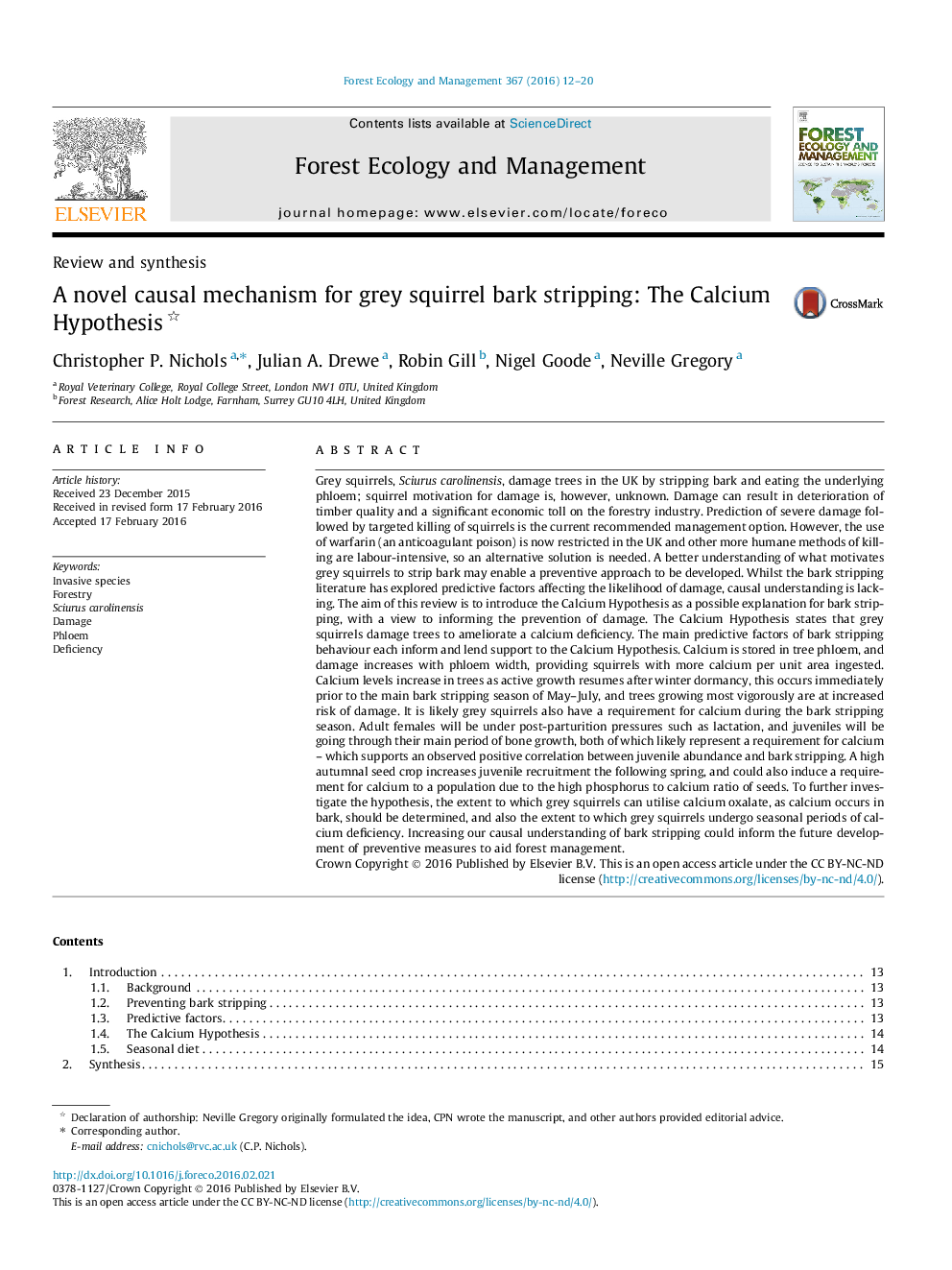| کد مقاله | کد نشریه | سال انتشار | مقاله انگلیسی | نسخه تمام متن |
|---|---|---|---|---|
| 6542319 | 159158 | 2016 | 9 صفحه PDF | دانلود رایگان |
عنوان انگلیسی مقاله ISI
A novel causal mechanism for grey squirrel bark stripping: The Calcium Hypothesis
ترجمه فارسی عنوان
یک مکانیسم علمی جدید برای سلب کردن خاکستری سنجاب خاکستری: فرضیه کلسیم
دانلود مقاله + سفارش ترجمه
دانلود مقاله ISI انگلیسی
رایگان برای ایرانیان
کلمات کلیدی
موضوعات مرتبط
علوم زیستی و بیوفناوری
علوم کشاورزی و بیولوژیک
بوم شناسی، تکامل، رفتار و سامانه شناسی
چکیده انگلیسی
Grey squirrels, Sciurus carolinensis, damage trees in the UK by stripping bark and eating the underlying phloem; squirrel motivation for damage is, however, unknown. Damage can result in deterioration of timber quality and a significant economic toll on the forestry industry. Prediction of severe damage followed by targeted killing of squirrels is the current recommended management option. However, the use of warfarin (an anticoagulant poison) is now restricted in the UK and other more humane methods of killing are labour-intensive, so an alternative solution is needed. A better understanding of what motivates grey squirrels to strip bark may enable a preventive approach to be developed. Whilst the bark stripping literature has explored predictive factors affecting the likelihood of damage, causal understanding is lacking. The aim of this review is to introduce the Calcium Hypothesis as a possible explanation for bark stripping, with a view to informing the prevention of damage. The Calcium Hypothesis states that grey squirrels damage trees to ameliorate a calcium deficiency. The main predictive factors of bark stripping behaviour each inform and lend support to the Calcium Hypothesis. Calcium is stored in tree phloem, and damage increases with phloem width, providing squirrels with more calcium per unit area ingested. Calcium levels increase in trees as active growth resumes after winter dormancy, this occurs immediately prior to the main bark stripping season of May-July, and trees growing most vigorously are at increased risk of damage. It is likely grey squirrels also have a requirement for calcium during the bark stripping season. Adult females will be under post-parturition pressures such as lactation, and juveniles will be going through their main period of bone growth, both of which likely represent a requirement for calcium - which supports an observed positive correlation between juvenile abundance and bark stripping. A high autumnal seed crop increases juvenile recruitment the following spring, and could also induce a requirement for calcium to a population due to the high phosphorus to calcium ratio of seeds. To further investigate the hypothesis, the extent to which grey squirrels can utilise calcium oxalate, as calcium occurs in bark, should be determined, and also the extent to which grey squirrels undergo seasonal periods of calcium deficiency. Increasing our causal understanding of bark stripping could inform the future development of preventive measures to aid forest management.
ناشر
Database: Elsevier - ScienceDirect (ساینس دایرکت)
Journal: Forest Ecology and Management - Volume 367, 1 May 2016, Pages 12-20
Journal: Forest Ecology and Management - Volume 367, 1 May 2016, Pages 12-20
نویسندگان
Christopher P. Nichols, Julian A. Drewe, Robin Gill, Nigel Goode, Neville Gregory,
